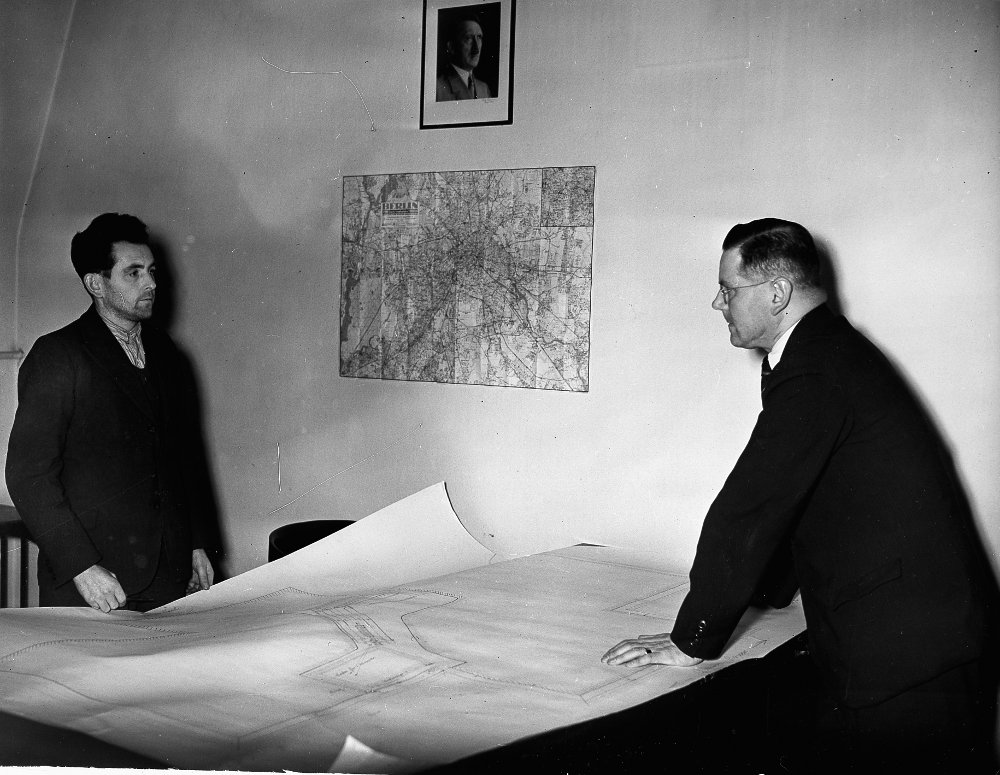Der Sohn eines im Ersten Weltkrieg gefallenen Photographen besuchte die Realschule und trat 1919 bei der Polizeidirektion München in den mittleren Polizeidienst. In Abendschulkursen holte er das Abitur nach und studierte ab 1927 in München Rechts- und Staatswissenschaften. Nach einem juristischen Vorbereitungsdienst und der Großen Staatsprüfung wurde er 1934 als Regierungsassessor in den höheren Polizeidienst übernommen und war zunächst bei der Kripo und dann bei der Bayerischen Politischen Polizei in München tätig. Im Herbst 1937 wechselte er zur Staatspolizeileitstelle Berlin. In der Reichshauptstadt machte er im Schatten von Gestapochef Heinrich Müller, den er aus München gut kannte, rasch Karriere.
Panzinger war im Sommer 1933 der SA beigetreten, 1937 wurde er in die NSDAP und 1939 in die SS aufgenommen. Im August 1940 kam er, nunmehr SS-Sturmbannführer, zum Reichssicherheitshauptamt (RSHA) und wurde zunächst ein Jahr lang als Sonderbeauftragter der Sicherheitspolizei bei der deutschen Botschaft in Sofia eingesetzt. Anschließend übernahm er im RSHA die Leitung der Amtsgruppe IV A (Gegnerbekämpfung). Hier koordinierte er unter anderem die Ermittlungen gegen Widerstandsorganisationen wie etwa die ‚Rote Kapelle‘. Außerdem wurden in seiner Amtsgruppe die Aussonderung und Ermordung bestimmter sowjetischer Kriegsgefangener (Juden, kommunistische Funktionäre) organisiert sowie die Berichte der Einsatzgruppen ausgewertet. Im September 1943 wurde Panzinger zum SS-Oberführer befördert und übernahm die Leitung der Einsatzgruppe A und das Amt des Befehlshabers der Sicherheitspolizei und des SD im Bereich des Generalkommissariats Ostland. In dieser Funktion war er führend in die Auflösung der letzten Ghettos, die Ermordung deren Bewohner*innen und den Terror gegen die Zivilbevölkerung unter dem Deckmantel der Partisanenbekämpfung eingeschaltet. Im Juni 1944 kehrte Panzinger kurz zur Amtsgruppe IV A zurück, ehe er im August 1944 als Leiter des Reichskriminalpolizeiamtes (Amt V) eingesetzt wurde.
Nach Kriegsende geriet er in sowjetische Gefangenschaft und wurde 1952 in Moskau zu 25 Jahren Zwangsarbeit verurteilt. Im Oktober 1955 durfte er in die Bundesrepublik zurückkehren. Anschließend war er als Regierungsrat zur Wiederverwendung für den Bundesnachrichtendienst tätig. Die Staatsanwaltschaft München klagte ihn 1958 wegen der Beteiligung an der Ermordung des kriegsgefangenen französischen Generals Maurice Mesny im Januar 1945 an. Als Panzinger im August 1959 verhaftet werden sollte, verübte er Selbstmord.


